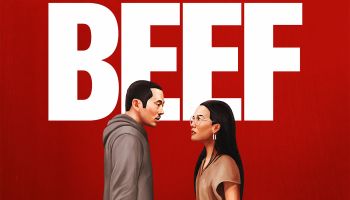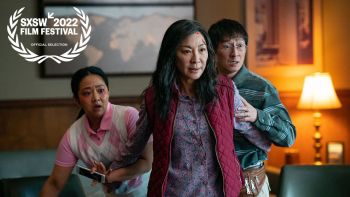More than 40 years ago, legendary comedian Dick Gregory made the observation that, “Guns and drugs go into the ghetto. Money comes out.” A few years ago in San Francisco, at a Juvenile Justice Summit, where everyone was beyond exasperation due to endless youth violence and incarceration, I asked if anyone was working to keep guns off the streets. People looked at me like I was crazy. Guns were just available, always would be. Teens in the hood can get weapons easier than fresh vegetables and that’s just the way it is.
All the focus on gun control measures have mostly been a reaction to Sandy Hook and Aurora and these tragic mass shootings where possible mental illness plays a role. Yet many black and Latino youth (and adults) are living with Post-Traumatic Stress Disorder, numb to gun violence, to losing friends and family to bullets from as far back as they can remember. Isn’t their voice, and daily reality, missing from the legislation put before Congress? Are they simply trees in the woods, falling in silence?
In Fall 2003, I was working at the Greater Mission Consortium (GMC) doing job training for teenagers in the Excelsior neighborhood of San Francisco. One day, two girls came in shrieking saying someone had been shot. Students from nearby Balboa High School had gotten into it, and it ended tragically for a loved young man named DeShawn Dawson. The newspaper read:
“DeShawn, 15, was shot in the face Thursday afternoon while riding the 29 Sunset bus to his after-school job as a tutor at the San Francisco Boys and Girls Club.”
At the GMC, we had an impromptu counseling session for over an hour, led by a passionate, caring co-worker named Jandro. I mostly sat and listened. As a privileged white male, this was my first experience with a “shooting.” But, these youth were veterans. At just 15 years of age, nearly all of these girls and boys had already lost people they loved to gun violence. The feeling of helplessness was pervasive.
DeShawn died and the next morning a group of us protested at a gun show that was being held at the Cow Palace in San Francisco. It was led by Brothers Against Guns and we carried signs that read “No More Guns.” Our group was mostly youth, standing up for life. We received some positive honks, but I recall several gun show attendees yelling “Go Home” at us. The worst memory was of a man who from the passenger seat, pointed his gun at us and tapped it against the glass window, as his friend drove off. We were angry as he seemed to be taunting us with an expression of “Screw you, you’ll never take my gun!”
Ten years later, this is where we are in the debate on gun control; mostly angry and talking past each other.
What is crucial to understand—and something I could not see myself until I worked in certain schools and neighborhoods–is the vast majority of young black and Latino boys and girls are innocent. They are human. They are only guilty of living in poverty, but this country has indeed made that a crime. They are smart, charming, go to school, some with enthusiasm some less so. They are normal, they are Americans. They want what every young person wants: to make it successfully, financially, to control their own destiny and ease the load on their families.
But we act as though “the ghetto” is their fault. This socio-economic injustice goes back 100+ years in every American city, with racism at its core. These young people must navigate the land mines of poverty, projects, subpar schools, poor parenting (at times), family abuse (at times), amid a neglected neighborhood where they often are not safe, where police are as likely to harass or harm them as protect them.
Are there some people living wrong? Absolutely. But, it’s so easy to judge from a seat in safe, secure middle-class America. The travesty being that our media, along with “The War on Drugs,” has basically implicated everyone who lives in The Hood. Cities like New York and Oakland are operating under “stop and frisk” policies that are racist and allow them free reign to round up people of color. A hoodie is clothing, not a crime. Our television, movies and media have continuously re-enforced the notion that blackness is savage and criminal, to be feared. People are unjustly painted with a broad brush, dehumanized as thugs, monsters, to the point where their freedom, their lives can be extinguished without most Americans giving a damn.
So, how do all these guns get into the hood? The answer must be: Easily. Is this the infamous gun show loophole? It must be easy to file off some serial numbers, so that weapons cannot be traced. Do the feds come after people dealing in illegal guns with the same fervor that they do for people dealing drugs?
The tragedy that continues in Chicago (and every U.S. city) really is a domestic war, but we don’t call it that. It does not garner the media attention that one missing white girl would.
There was an incident in Oakland where 12 year-olds were playing the game Dodgeball with guns. Mercifully the game ended without death. I recall a horrific drive-by story from Potrero Hill, San Francisco, where the intended target, a man, used the girl he was with as a human shield when the bullets erupted. He survived, she did not. A friend of mine, now happily (and thankfully) in college, grew up within the Double Rock projects and once lamented about spending an entire summer inside. It was nowhere near safe in her neighborhood and she wanted desperately to live. There are grandmas holed up in apartment buildings in inner-cities across America, scared to come out to go to Safeway for groceries. This is no way to live, held hostage by daily violence.
We do not hear these voices. When is enough enough? It’s way past time for intervention.
During the crack epidemic (from the mid 1980s-early 90s), the decision could’ve been made to help a generation that was suffering and devastated by this newly created drug. But instead it was prison construction, human warehousing and enormous profits. We now have descendants of this inhumane legacy, fighting for a life within a society that does not want them to have one.
We’ve got boys willing to die, but they don’t know why. Yet we still sit idly by.
They are soldiers without a cause.
The roots of this violence are complex; would like to focus a future piece on some heroic people and organizations dedicated to keeping young people “alive and free.” In the meantime, we must continue to fight for legislation that bans assault weapons and large magazine cartridges, which have no place in a civilized society. Efforts should be made to keep guns only in the hands of responsible background-checked adults. For no matter your income or race, there is nothing more valuable than an individual’s life.
Jason Biehl
Jason Biehl is a high school history teacher in Washington DC. Prior to that he taught in public schools in San Francisco.
















